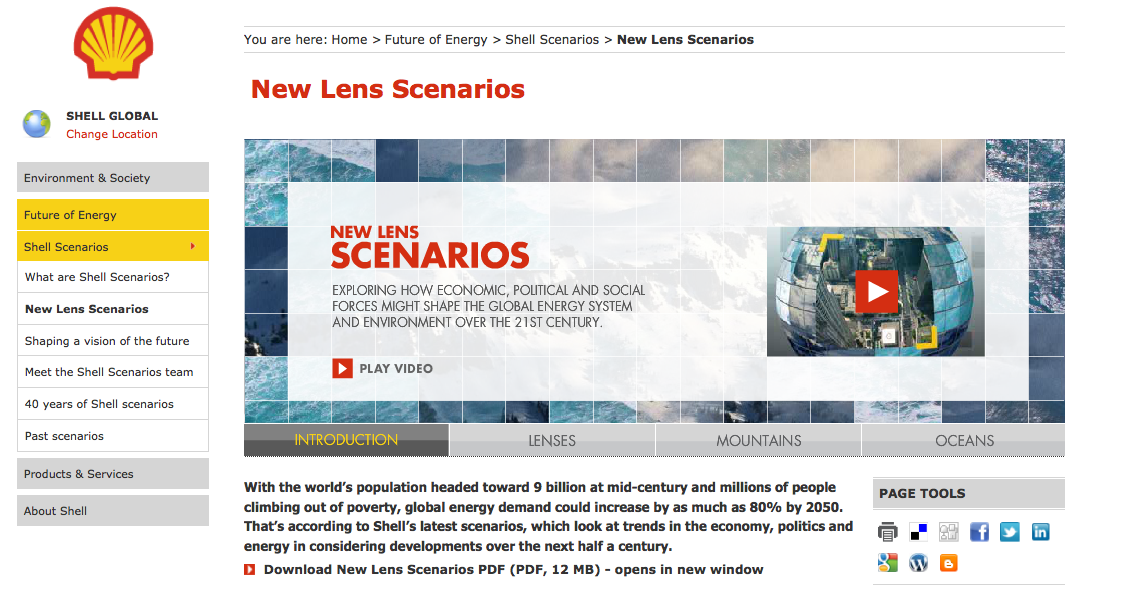Asia is emerging as a big player in the offshore oil and gas sector, but is it capable of producing leaders with a vision to take the industry into its next frontier?
The offshore oil and gas industry has seen its fair share of ups and downs. For nearly two centuries it has overcome every crisis because the modern economy needs oil for rapid development and will continue to do so for the foreseeable future. However, for the first time due to a variety of factors, the industry is reaching a crossroads.
The promised boom due to the emergence of the BRIC (Brazil, Russia, India and China) economies is proving to be a bubble. China, the lynchpin of the BRICs, is slowing down. Except for the US, the rest of the G8 economies are slowly humming along, dampening demand prospects for the future.
In terms of supply, yields have improved through innovation in extraction and drilling for oil. The industry is more than capable to meet rising demand—but demand is about to change. In about a decade new technologies from electric cars to self-generating energy models such as solar and wind will become mainstream, further impacting the demand for oil. All these factors will set up the perfect storm of oversupply when it meets a world that is moving away from its dependency on oil.
So far Asia’s offshore oil and gas companies have been rising in prominence through acquisition and innovation to meet rising demand, but who is looking over the horizon to meet the challenges of a changing world?
Demand first, vision later
The offshore oil and gas sector in Asia has for many years been dominated by state-owned enterprises due to the need for high-capital investments and risk taking capacity. As the region is growing rapidly, much of the focus of state-owned giants like China National Offshore Oil Corporation (CNOOC) has been about acquiring new companies or oil and gas fields to fuel domestic economic growth.
In the supporting services and equipment industries, established Asian players such as Keppel Offshore & Marine and Sembcorp Marine have been winning industry acclaim through innovation. Despite the incredible talent in the industry, vision is in short supply due to the region’s rapid growth.
Ron Mao, Managing Director for SPEQS Manufacturing, a precision engineering company supporting the oil and gas sector, shared three reasons Asian firms struggle to achieve innovation and to have a vision for the industry:
- Major oil and gas players set up business in Asia for cost savings. Rising costs and eroding margins restrict companies from venturing into innovation.
- Demand for good engineering talent is higher than supply, so it’s hard to find and retain good people.
- Asian companies trail behind their US and European counterparts in R&D capability. Most of the plant and equipment are already well-developed and established by Western players, who hold the intellectual property to those designs. Smaller Asian players, daunted by the costs to redesign the plant and equipment, choose to innovate by improving the design of the components or sub-assemblies of the equipment.
Gurdip Singh, an editor at Offshore Magazine, believes that because many Asian giants such as Thailand’s PTT or Indonesia’s Pertamina are state owned, the scope of their vision is limited toward commercially-driven growth and they are obliged to satisfy domestic demands first. Contrast this with global giants such as ExxonMobil that naturally have a better worldview due to their scale.

As the offshore oil and gas industry faces unprecedented challenges, which Asian player is looking over the horizon to meet those challenges? Photo credit: 9iudjz0, stock.xchng.
Whoever sees furthest wins
During the Organisation of the Petroleum Exporting Countries (OPEC) meeting in June this year, the cartel—which controls 40 percent of global oil supply—had to seriously consider the growing possibility of oversupply. Supply from outside the group is growing. Furthermore, the US, OPEC’s biggest customer, has started to become a bigger supplier due to its recent discoveries of shale, thus reducing its need for imports and potentially bringing down prices.
The rise of unconventional oil and gas resources is changing the landscape in ways previously unknown. If the industry is not careful, soon all the innovation going toward meeting demand will find few customers unless companies offer a discount. With the supply of oil becoming more predictable and the rate of demand becoming slower, it is perhaps time to rethink the business model.
Another industry that is probably as cost-prohibitive and risky as the offshore oil and gas sector is the space industry. It has been almost entirely dominated by state-run agencies, and it was only recently that the US government allowed the participation of private enterprises to save costs and accelerate innovation.
SpaceX, founded by Elon Musk, is the only company that has successfully launched a delivery capsule to the International Space Station and back. Musk owns two other firms, Tesla and Solarcity, which collectively will affect the lives of millions, as they become more and more mainstream. And yet Musk managed to do it with less resources than the automobile and energy giants of his day. His work may be perceived as being too ahead of its time, but being among the first will give Musk a bigger stake in how people drive on the roads and travel into space.

Can Asia’s Oil & Gas Sector produce leaders like Elon Musk? Photo credit: OnInnovation (www.oninnovation.com), Flickr.
Instead of chasing low margins and dwindling opportunities, it is time for Asian offshore oil and gas companies to harness their unique engineering skills and think about exploring another path to survive the coming storm and possibly shape the future.
Here are three ways you can emerge as the next Elon Musk for the offshore oil and gas industry:
1. Redesign the Model for Success
In a highly competitive sector with decreasing margins such as offshore oil and gas, business transformation is difficult but not impossible.
The first step is to identify the different types of revenue generated by the company. Many Asian companies play a supporting role in adapting engineering solutions hence the very limited room for margins improvement. The more important type of revenue generation is intellectual property or proprietary design.
It’s a pity that many companies in Asia fail to focus on developing a process to properly harness and monetise on their inherent engineering knowledge. Management usually cite lack of time as the cause. However, our experience has shown us that dedicating time for internal knowledge development and codification will act as an investment for the future.
After discovering intrinsic strengths and possible bases of engineering know-how, set up a high-level group to discuss scenarios confronting the company. These discussions should cover the changing needs of immediate customers, shifting industry norms and disruptive global trends. They should identify asymmetrical trends that can impact your industry.
Shell, for instance, is renowned for developing strategies based on scenario-planning that has helped the company to think ahead and develop profitable solutions for the future.

Constantly asking the “what if?” questions, Shell Scenarios has enabled the company to explore alternative views of the future and plan for worst case scenarios.
Once you match internal know-how with a view on the future, it’s time to plan a transformation from a competent contractor to a change agent over a five- to 10-year roadmap. Such a roadmap requires consistent commitment from leaders. A cause-and-effect flowchart should be put in place to ensure that leaders have a way to see how their actions help to make the business more sustainable.
2. Reorganise for innovation
Many Asian firms servicing the offshore oil and gas sector have little time to develop a knowledge-based culture as most of it is spent on pursuing and fulfiling contracts.
It’s a pity, because much more can be drawn from the workforce with the right conditions in place. Most human resource policies in the industry are geared toward fast deployment of workforce, not development. Many engineers have shared that salary is the primary reason they switch jobs, as the lack of career development in most companies in the industry makes them interchangeable. An organisational culture that supports development and rewards innovation will be a differentiating factor.
Asian offshore oil and gas companies should invest in better HR managers and make an effort to nurture a collective process of idea development. A more holistic measurement framework will be necessary to see if the corporate culture is actually generating positive returns in terms of IP development and collaboration. Avoid measuring success based on the number of ideas generated. Instead aim for robust discussions and create mixed groups of engineers to develop well-rounded solutions. Finally, take time to celebrate small wins when these solutions start to make a difference to the business.
3. Be disciplined in how you communicate your business vision
Many Asian companies servicing the offshore oil and gas sector project an image of a typical contractor with no new ideas or solutions to offer. They fail to realise that they are missing plenty of high-value opportunities simply because they don’t consistently communicate their capabilities. Websites are left stagnant for years and corporate profiles are written from a template. It’s as though Asian companies have accepted the fact that they can never breach the barrier of thought leaders and don’t even want to try.
To increase chances of getting higher value projects, it is necessary to treat branding seriously. (See how an emerging Asian player, Rotating Offshore Solutions, transformed from being a contractor to a solutions expert.)
First review all your communication channels, from your sales presentation to your website. Identify frequently used keywords and see if they truly represent your unique advantage. Survey your rank and file: When they talk about the company, what do they say? For any branding exercise to have a direct impact on business opportunities, nothing must be left to chance. Get the top management and business development staff to agree on a common script. Clarify to the staff what the company stands for and break it down point by point.
Review how you have been presenting yourselves in terms of visuals. Does the top management appear in poorly-shot photographs that portray them as contractors and not professionals? Review how you present your products and services. Are there areas where you are seen as presenting unique value? For differentiated solutions that you have developed based on proprietary knowledge, find ways to brand and promote them. (See how engineering services group Cyclect changed the way it presented its solutions.)
Vision is ultimately about how well you sell your beliefs. Your company will enjoy the rewards of consistent messaging when more and more clients choose you to work on projects that you believe in.
Lawrence Chong is the CEO and Tang Ying Chun is the Manager for Strategy at Consulus. The visual for this article was done in collaboration with Anna Gregorio, a design consultant at Consulus. The firm has served Asian companies in the oil and gas sector in organisational and brand transformation.
This article is part of The Columnist, a newsletter by Consulus that offers ideas on business, design and world affairs. For past issues, browse the complete archive.




